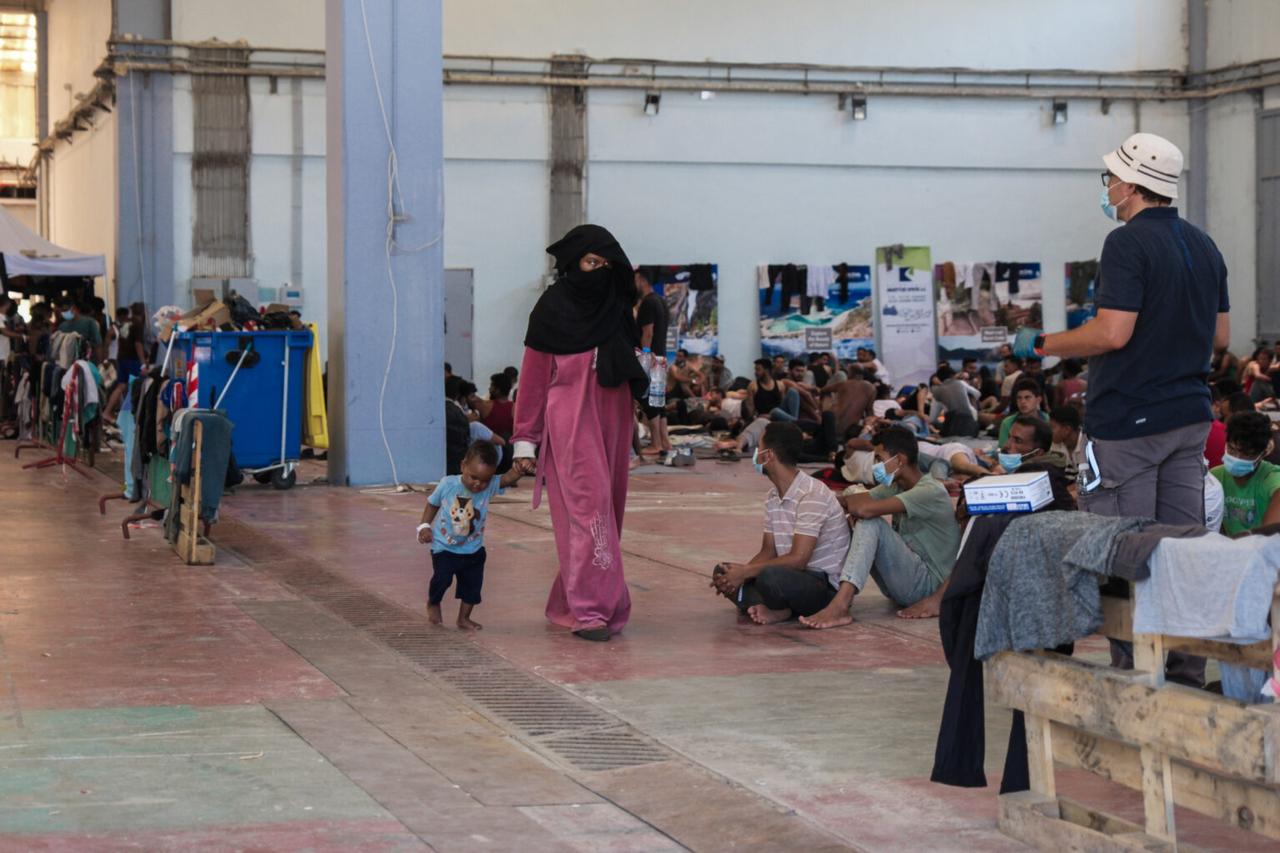
Crete has become a new entry point for migrants from North Africa, exposing the absence of a permanent reception system on the island.
Temporary spaces meant for short stays now host hundreds of people for weeks, raising concerns over health, safety, and funding for immigrants in Greece.
What is happening?
A total of 342 migrants remain in the temporary site at Agia in Chania, Crete, most from Sudan.
They arrived around the Greek national holiday on Aug. 15 and now live in a former exhibition center without long-term facilities.
Deputy Mayor Eleni Zervoudaki said many people have fallen ill and the municipality cannot provide the care they need, as reported by Kathimerini.
The site was set up about two years ago by the Municipality of Chania with the Region because Crete has no permanent, organized facility. It serves as a holding point for people who land on different parts of Crete or are brought in by the Hellenic Coast Guard.
Local officials say the space was never meant for long stays and needs cleaning and disinfection between waves of arrivals.
Responsibility for guarding and transfers shifted in mid-summer and in July, the coast guard handled both tasks.
A later circular assigned them to the police. Since then, the municipality says ministries pass the blame while transfers stall.
Zervoudaki said the Migration Ministry told the city it was not competent and the police said they lack staff and that pre-removal centers in Larisa and Serres are not ready.
The city also faces a financial strain. Chania has spent €260,000 (nearly $305,000) between June 16 and Sept. 8 for food and site upkeep. It was also reported that the earlier months added €350,000.
Zervoudaki said the municipal budget cannot sustain this burden without support. She noted the state receives relevant EU funds while the city covers daily costs on its own.
Migration and Asylum Minister Thanos Plevris said a closed facility will be built on Crete, similar to those on Lesvos, Samos, and Kos.
“It is certain that there will be a closed structure in Crete,” he told Kathimerini. He also pointed to falling arrivals after Greece suspended the right to lodge asylum claims for people arriving from North Africa. Reportedly, July saw about 3,650 arrivals and August fell to 689, an 80 percent drop.
Local authorities remain cautious. An ERTNews dispatch in mid-July said rough seas briefly halted landings and the Agia site fell from 860 people to about 425, with further departures planned.
The report described slow transfers due to registration, medical checks, case files, and checks for suspected smugglers. It warned that calmer seas could reopen the Libya to Crete route.
For those of you who may not know, Greece adopted stricter measures this summer.
The government suspended asylum procedures for arrivals from North Africa for three months starting in July.
The policy line seeks to deter crossings and speed returns while creating a standard model for reception through closed sites.
The ministry’s pledge for a closed facility on Crete seems to fit this plan. Local officials say clarity on staffing and available places on the mainland remains essential to move people out of Agia.
Migration remains at the center of political and social debate in Greece, with official figures offering a picture of how many people live in the country under different legal categories.
Recent administrative data show 901,536 legally resident migrants in Greece as of July 2025, as reported by Proto Thema.
That includes:
The Golden Visa track adds 23,221 investors and 42,035 family members who hold residence rights in Greece.
Public debate also touches on demographics. A News247 commentary argued that Greece faces a steep population decline without migration.
It cited academic work showing that from 2009 to 2020, births among foreign residents exceeded deaths by about 150,000, while among native Greeks, deaths exceeded births by 402,000.
Officials in Crete and Athens are monitoring several developments that will determine how the situation in Agia unfolds and how migration policy is applied on the island.
The most pressing points include:
The broader context of migration in Greece is reflected in recent figures released by the Ministry of Migration and Asylum and summarized by local media.
These numbers demonstrate both local pressures and the national scale of migration:
The situation in Agia seems to reflect the tension between local responsibilities and national migration policy in Greece.
Chania municipality continues to cover daily costs while waiting for transfers and a permanent facility. On the other hand, the government points to a sharp fall in arrivals since the asylum suspension in July and insists a closed structure will be built on Crete.
National figures underline the scale of migration in Greece, with more than 900,000 legal residents, over 91,000 recognized refugees, and tens of thousands of investors holding Golden Visas. Demographic studies also show the role migrants already play in balancing Greece’s shrinking population.
Still, what remains uncertain is how quickly a closed facility will open on Crete and whether reduced arrivals will hold as weather conditions improve on the Libya–Crete route.